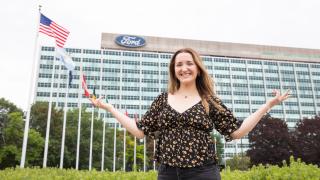
When it comes to health outcomes, Wayne County ranks last out of Michigan’s 82 counties. The county has the highest percentage of persons below the poverty level. It also has the lowest percentage of high school graduates.
Those are alarming numbers. And the College of Education, Health, and Human Services (CEHHS) has a plan to create change by linking people to local resources and educational opportunities. The Center for Disparity Solutions and Equity, which started in fall 2015, is a focused center for studying, researching, disseminating and implementing promising evidence-based solutions to reduce inequalities.
The goal of the Center for Disparity Solutions and Equity is to bridge the gap in education, health and human services by making connections for those with a need and those looking to assist in the movement toward equity.
The center, which has been nearly two years in the making, has been a collaborative effort. Several faculty from different fields, such as economics, public health, education and social studies, have shared the resource connections and community needs they’ve seen while working in the Metropolitan Detroit area. Also included in this initiative are outside organizations such as the Samaritan Center and Joy-Southfield, both in Detroit, with more to come on board soon.
Terri Laws, assistant professor of health and human services and African and African American studies, said she’s seen firsthand the inequities in healthcare. Laws said she’s been looking forward to seeing the center open because it is “the right project for Detroit and its metro region right now.”
“No matter what we look like and where we’ve come from, we are all in need of healthcare and education. Having access to these is a human right,” said Laws, who once worked as an administrator in community-based healthcare for the underserved. “This center is an opportunity for us, collectively, to look at ways to lessen disparities with the goal of reaching full equity.”
Chris Burke, associate professor of education, said the center will help people in the community collect data and do research to solve problems, assist groups in identifying assets and building collaborations, and promote thinking about issues at a policy level.
Burke and several of his colleagues already are doing work—from teaching local school educators and students to conducting surveys in neighborhoods—to help bridge inequities. But he said the center will take that work several steps further.
“In all the work we do, whether in education or in health and human services, there is an overlap—the community and neighborhoods,” he said. “We are going to work to bring the resources together. We’ve seen change already, but imagine what can happen when we are connected.”




